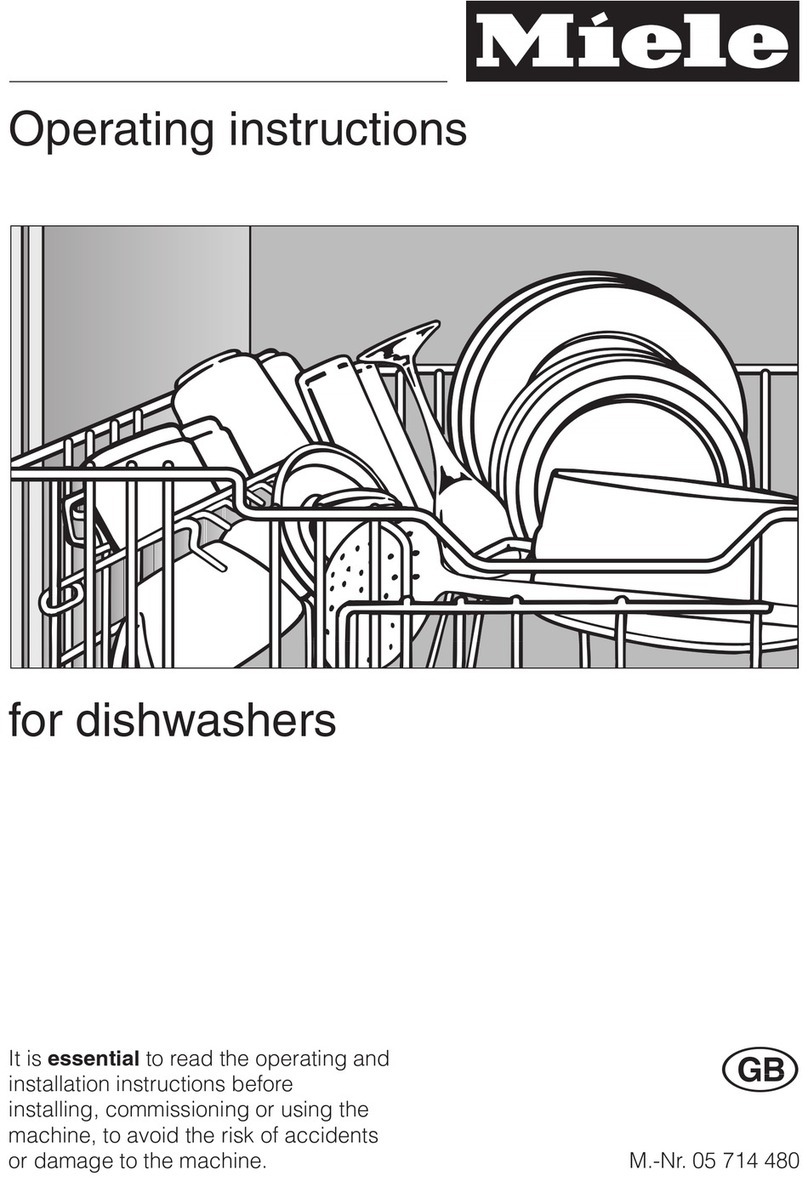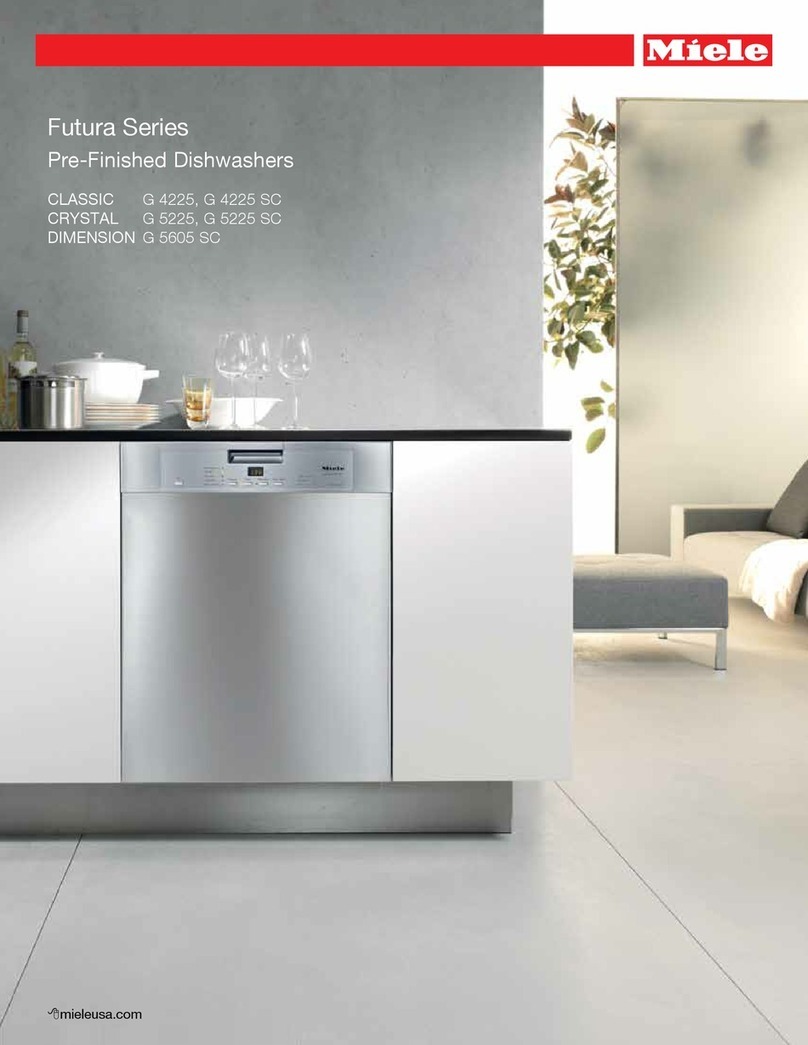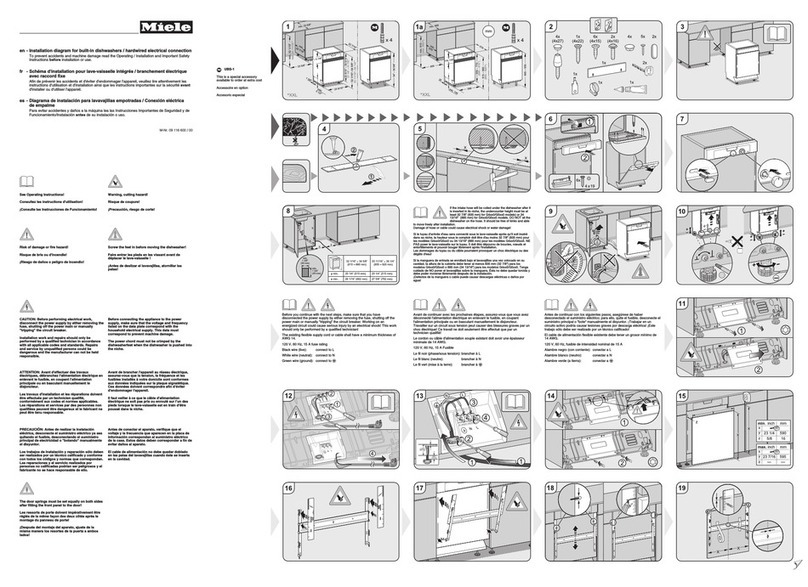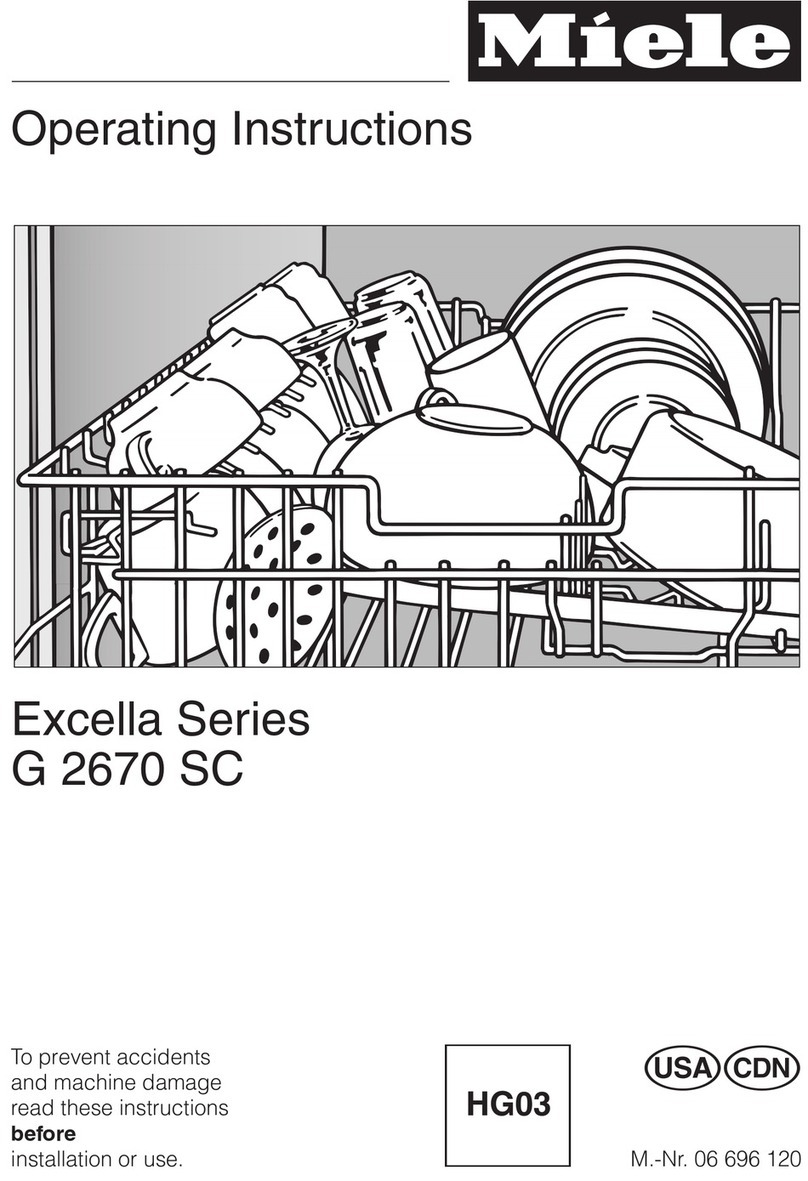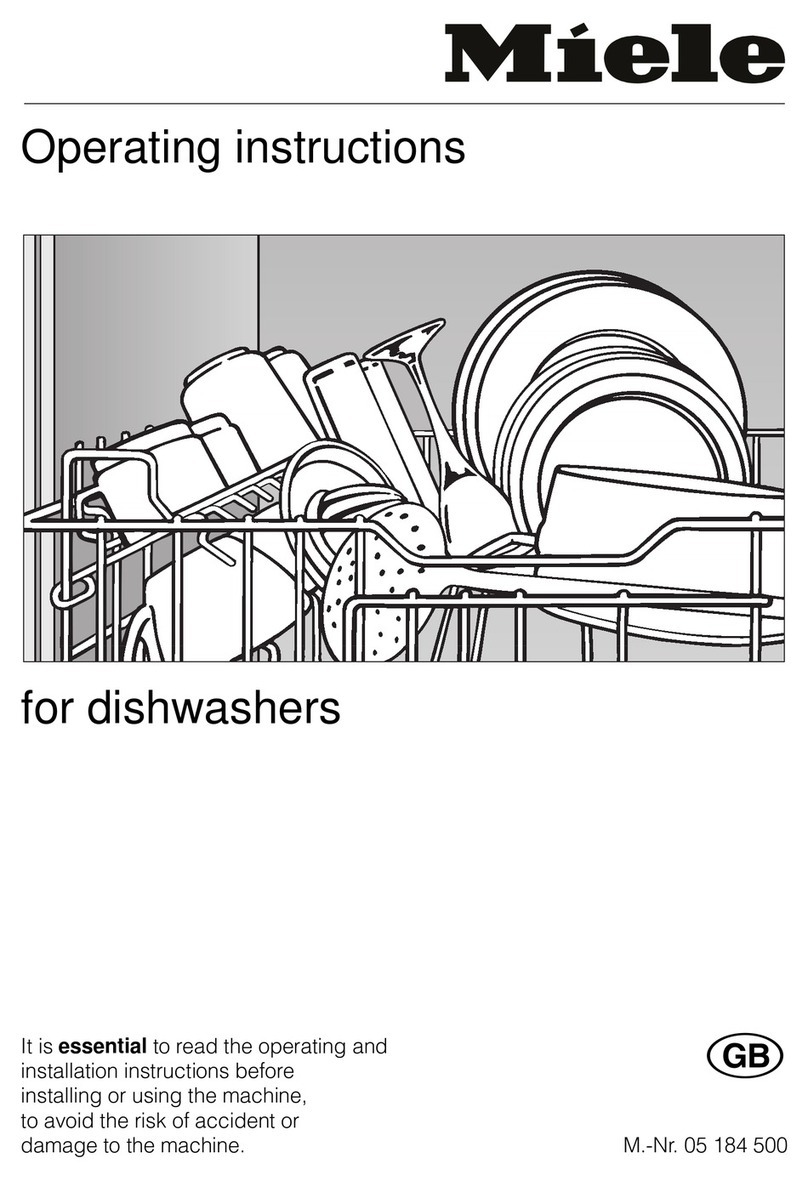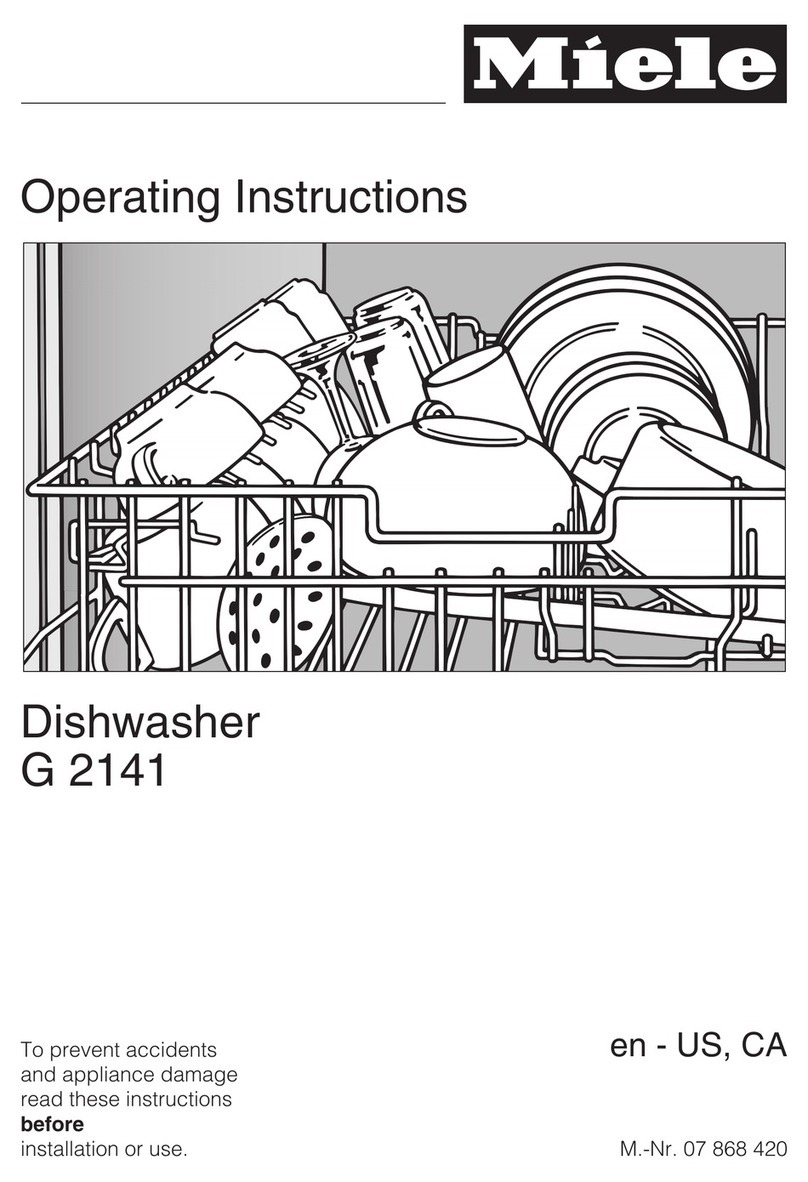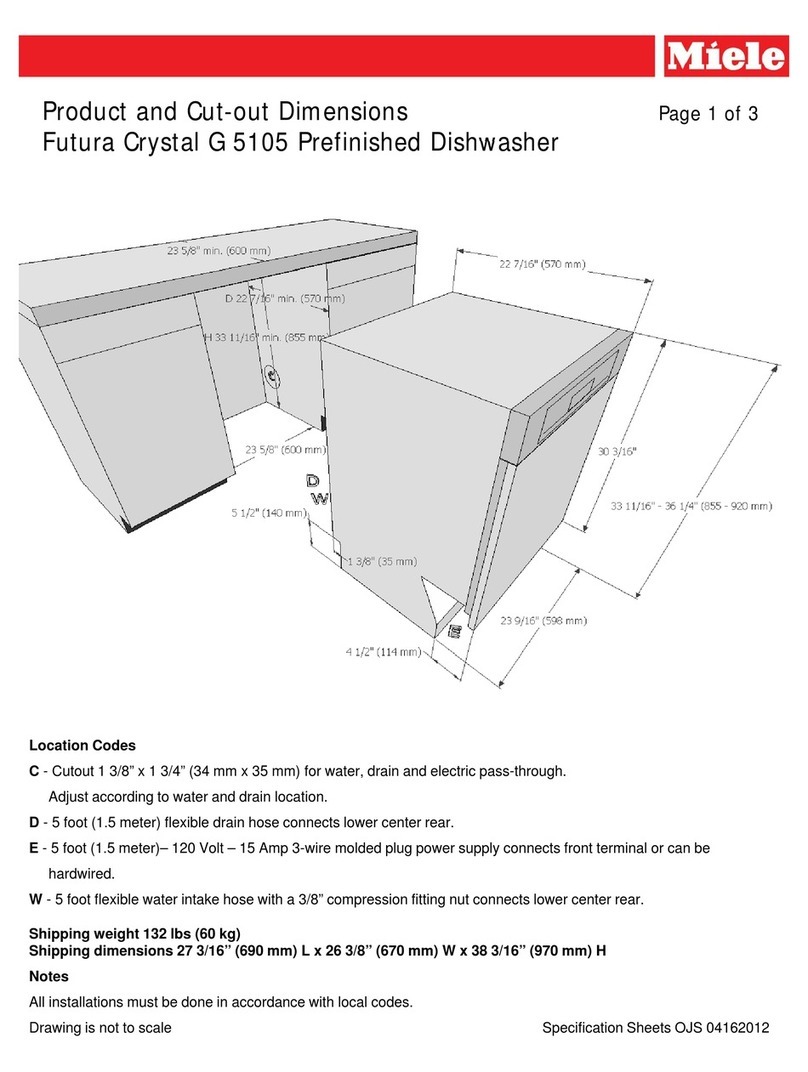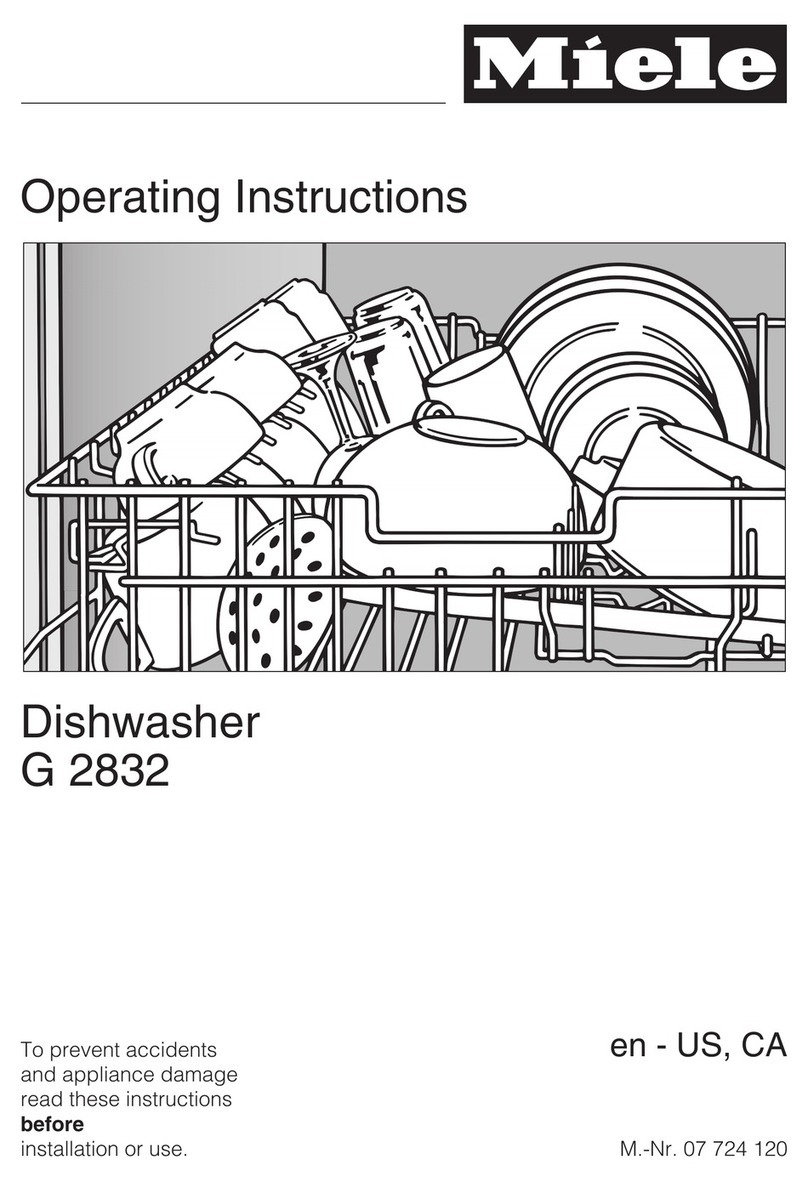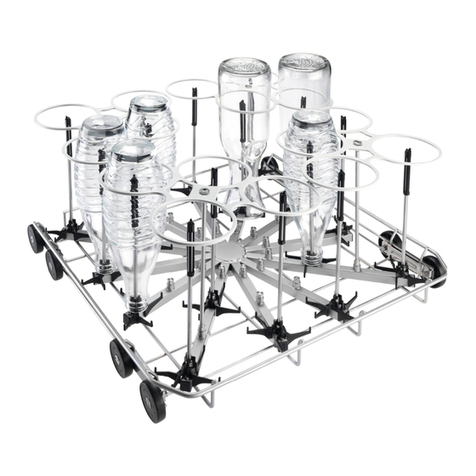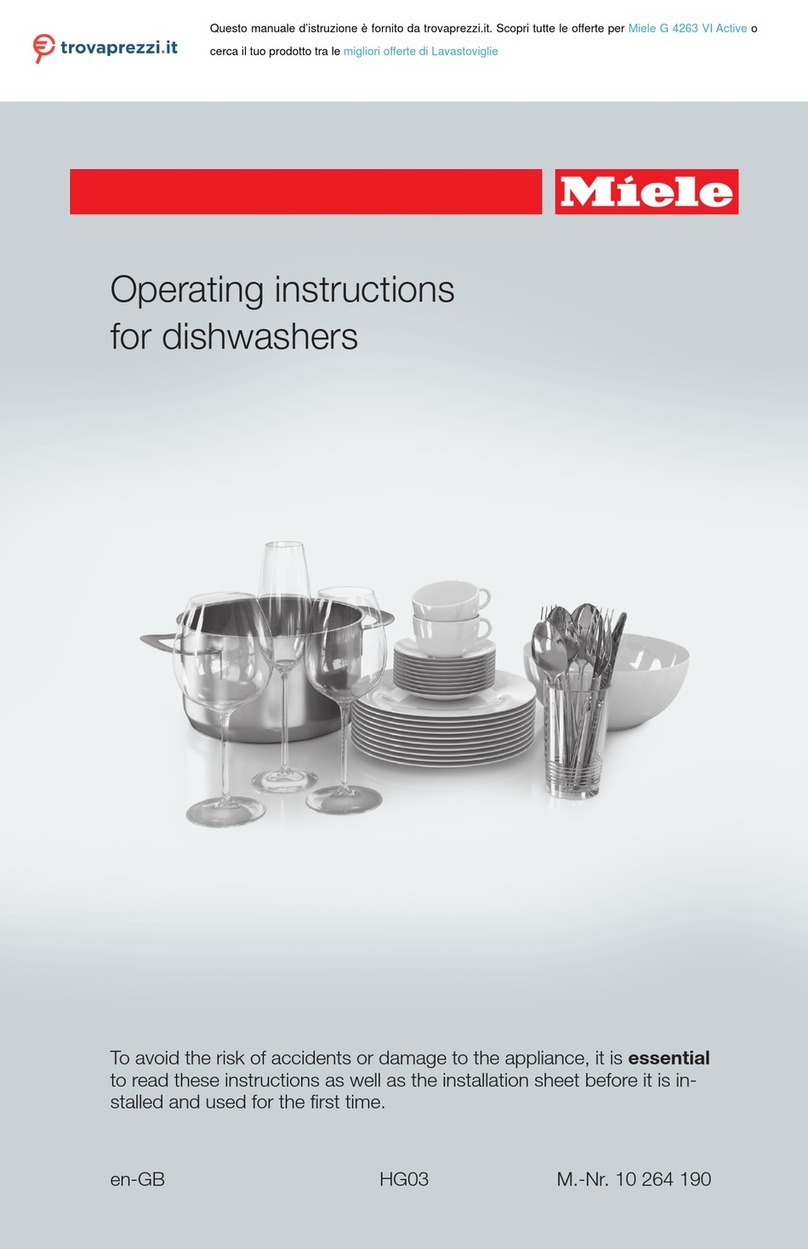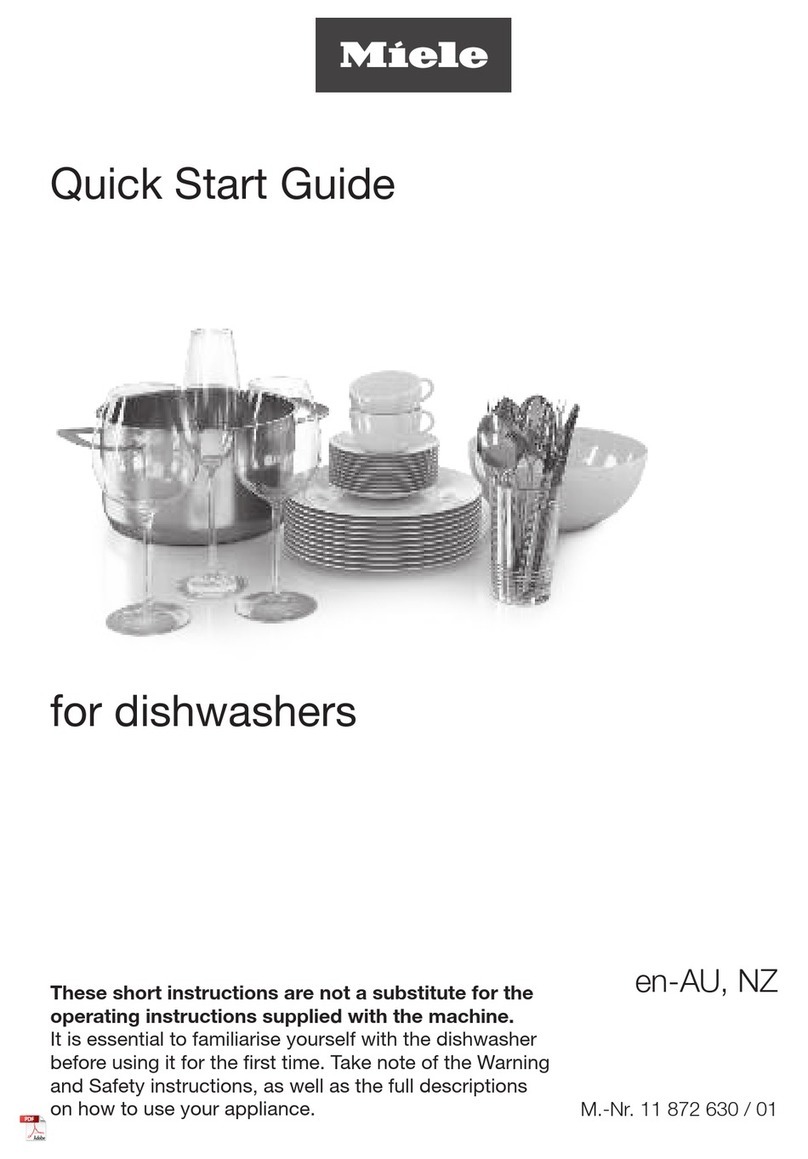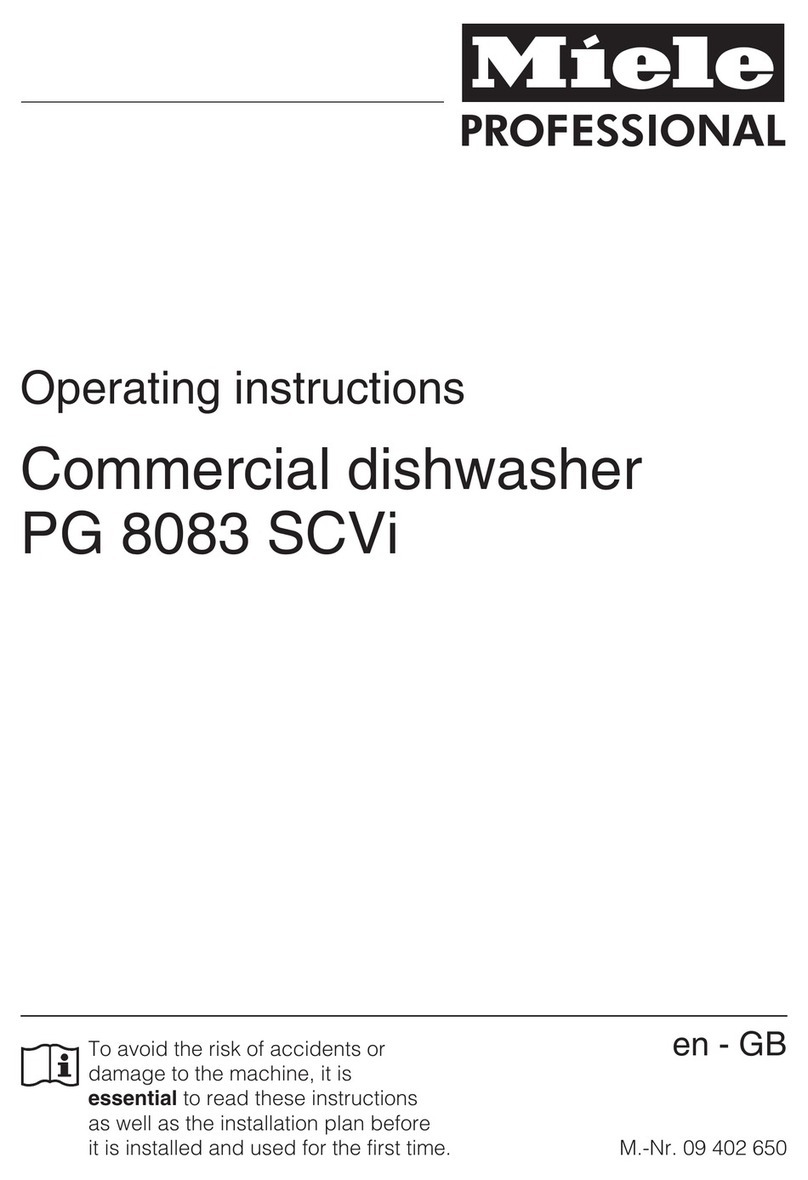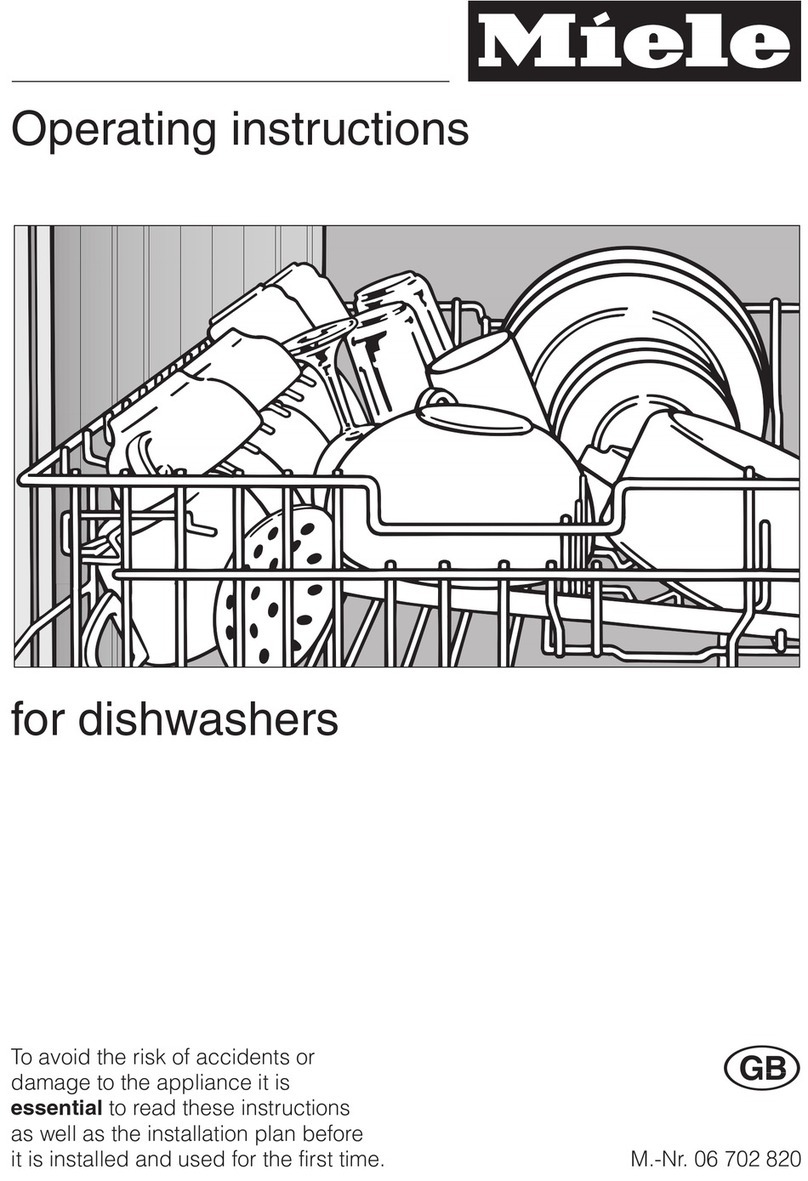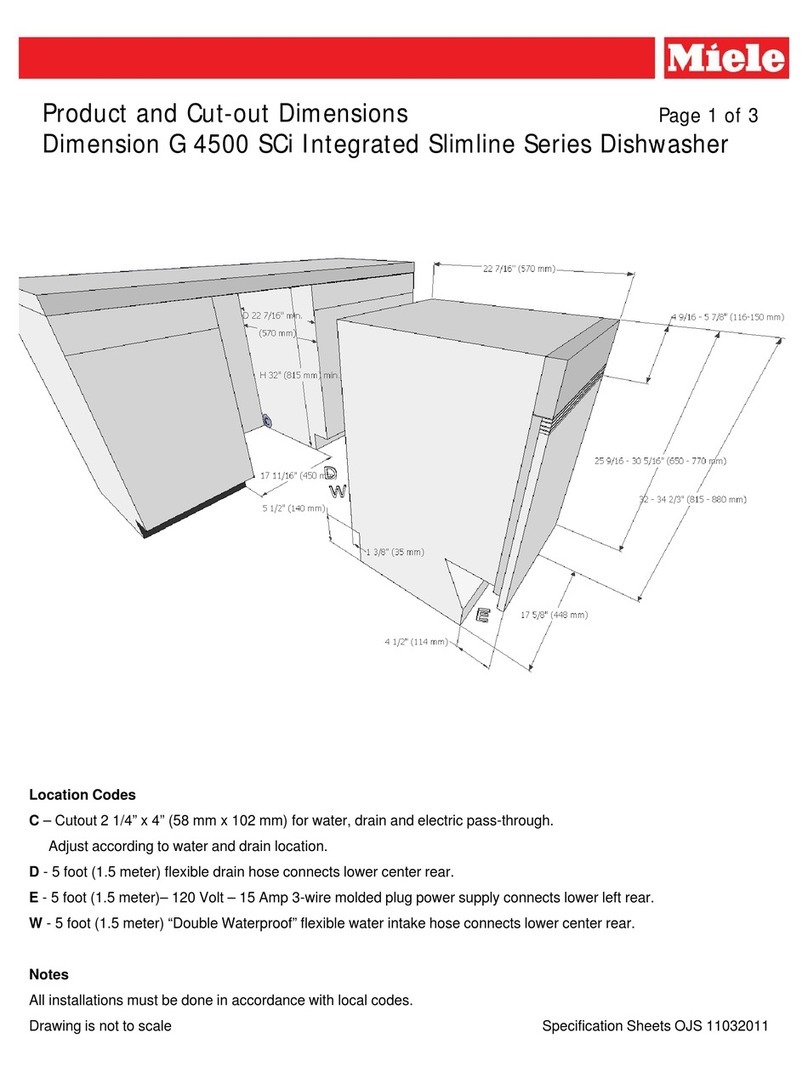The electrical safety of this appli-
ance can only be guaranteed when
continuity is complete between the ap-
pliance and an effective earthing sys-
tem. It is most important that this basic
safety requirement is tested and where
there is any doubt, the electrical system
in the house should be checked by a
qualified electrician. The manufacturer
cannot be held liable for the conse-
quences of an inadequate earthing sys-
tem (e.g. electric shock).
This equipment is not designed for
maritime use or for use in mobile
installations such as caravans, aircraft
etc. However it may be suitable for
such usage subject to a risk assess-
ment of the installation being carried
out by a suitably qualified engineer.
A damaged machine is dangerous.
Switch off at the mains and call
your Miele supplier or the Miele Service
Department.
The plastic housing of the water
connection contains an electrical
component. The housing must therefore
not be dipped in water.
There are live wires in the water in-
let hose. Never cut the water inlet
hose, even if it is too long.
For safety reasons do not operate
this appliance on an extension ca-
ble. (Danger of overheating).
Daily use
Do not use solvents in the dish-
washer. Danger of explosion.
Water in the dishwasher must not
be used as drinking water. This wa-
ter is not drinking water.
Avoid inhalation of powder deter-
gents. Do not ingest dishwasher
detergent! Dishwasher detergents con-
tain irritant or corrosive ingredients.
They can cause burning in the nose,
mouth and throat if swallowed, or inhibit
breathing. Consult a doctor immediate-
ly if detergent has been swallowed or
inhaled.
Do not sit or lean on the opened
door. This could cause the dish-
washer to tip and be damaged and you
could get injured.
In an appliance with a cutlery bas-
ket (depending on model) cutlery
is cleaned and dried more efficiently if
placed in the basket with the handles
downwards. However, to avoid the risk
of injury place cutlery with sharp points
with the handles upwards.
Only use detergents formulated for
domestic dishwashers. Do not use
washing-up liquid.
Only use rinse aid formulated for
domestic dishwashers.
Only use special coarse grained
dishwasher salt for reactivation. Do
not use other salts such as cooking
salt, agricultural grade or gritting salt.
These may contain insoluble additives
which can impair the functioning of the
water softener.
Warning and Safety instructions
7
